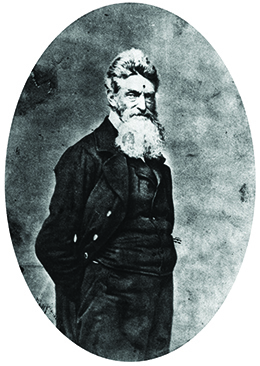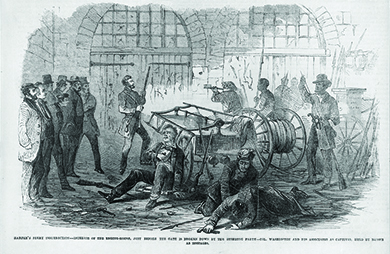| << Chapter < Page | Chapter >> Page > |
Events in the late 1850s did nothing to quell the country’s sectional unrest, and compromise on the issue of slavery appeared impossible. Lincoln’s 1858 speeches during his debates with Douglas made the Republican Party’s position well known; Republicans opposed the extension of slavery and believed a Slave Power conspiracy sought to nationalize the institution. They quickly gained political momentum and took control of the House of Representatives in 1858. Southern leaders were divided on how to respond to Republican success. Southern extremists, known as “ Fire-Eaters ,” openly called for secession. Others, like Mississippi senator Jefferson Davis, put forward a more moderate approach by demanding constitutional protection of slavery.
In October 1859, the radical abolitionist John Brown and eighteen armed men, both blacks and whites, attacked the federal arsenal in Harpers Ferry , Virginia. They hoped to capture the weapons there and distribute them among slaves to begin a massive uprising that would bring an end to slavery. Brown had already demonstrated during the 1856 Pottawatomie attack in Kansas that he had no patience for the nonviolent approach preached by pacifist abolitionists like William Lloyd Garrison. Born in Connecticut in 1800, Brown ( [link] ) spent much of his life in the North, moving from Ohio to Pennsylvania and then upstate New York as his various business ventures failed. To him, slavery appeared an unacceptable evil that must be purged from the land, and like his Puritan forebears, he believed in using the sword to defeat the ungodly.

Brown had gone to Kansas in the 1850s in an effort to stop slavery, and there, he had perpetrated the killings at Pottawatomie. He told other abolitionists of his plan to take Harpers Ferry Armory and initiate a massive slave uprising. Some abolitionists provided financial support, while others, including Frederick Douglass, found the plot suicidal and refused to join. On October 16, 1859, Brown’s force easily took control of the federal armory, which was unguarded ( [link] ). However, his vision of a mass uprising failed completely. Very few slaves lived in the area to rally to Brown’s side, and the group found themselves holed up in the armory’s engine house with townspeople taking shots at them. Federal troops, commanded by Colonel Robert E. Lee, soon captured Brown and his followers. On December 2, Brown was hanged by the state of Virginia for treason.


Notification Switch
Would you like to follow the 'U.s. history' conversation and receive update notifications?